|
Matters Arising
I know I have made a rod for my own back by allowing democracy to raise its untrustworthy head, but when the subject is the iconic phrase “Return to our Muttons” I think it important to continue the debate into another year. All my correspondents agree that the phrase originates with the French revenons à nos moutons despite my rather rude suggestion that it may have originally been said in Welsh. In fact my fellow boulevardier that fine writer of spy fiction David Brierley, who now lives in England again (something to do with the statute of limitations I believe), points out that in Welsh the phrase would be ddychwelyd at ein defaid, for which I am grateful. A Cambridge-based academic and fellow member of the Margery Allingham Society points out that the phrase was used (in English) by both Ngaio Marsh in Death in Ecstasy in 1936 and by P. D. James in Death of An Expert Witness in 1977. I look forward (sigh!) to news of yet more sightings of this useful phrase in crime fiction ancient and modern.
The Last Detail
The last event on the 2014 social calendar was the delightful ‘Christmas Chrime’ party held at the mighty Heffer’s Bookshop in Cambridge; an event awash with good books, writers, readers, mince pies and delicious mulled wine. This now established seasonal event had a second purpose this December in that is also saw the official launch of the anthology Bodies in the Bookshop, inspired by Heffers crime fiction supremo Richard Reynolds, edited jointly by the Detection Club’s L.C. (Len) Tyler and Shots’ very own Ayo Onatade, and published by Ostara.

The Bodies anthology, which contains twenty stories on the themes of books, bookshops and Cambridge features a galaxy of contemporary crime-writing stars including Simon Brett, Andrew Taylor, Peter Lovesey, Ruth Dudley Edwards, Ann Cleeves, Michael Gregorio and Alison Bruce, and judging by the number sold on the night, copies found themselves in many a crime fan’s stocking on Christmas Day.
Amidst the celebrations and seasonal jollifications, there was a poignant moment when Cambridge crime writer Nicola Upson proposed a toast and a heartfelt tribute to the late P.D. James whom she described as ‘a friend of crime writing and a friend of Heffers’ to whom everyone in the room – readers and writers – owed a significant debt.
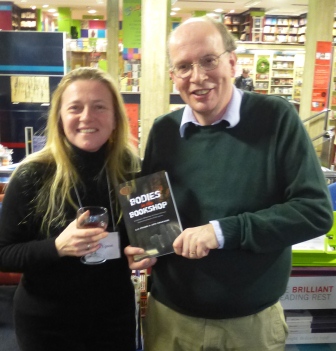
We Are the Campions…
It is set to be a good year for fans (or discoverers) of Margery Allingham and her famous ‘Golden Age’ detective Albert Campion. Under the sign of the Death’s Head Hawkmoth, Vintage have announced a rolling publishing programme which will see 11 of her classic novels reissued this year and a further nine in 2016. Allingham and her famous ‘Golden Age’ detective Albert Campion. Under the sign of the Death’s Head Hawkmoth, Vintage have announced a rolling publishing programme which will see 11 of her classic novels reissued this year and a further nine in 2016.
The first tranche of titles will appear in May and will include Allingham’s most famous thriller Tiger in the Smoke, the late Harry Keating’s favourite Death of A Ghost and, as it turns out, my personal favourite, Look To The Lady.
If none of the above has rung any bells then I am in despair, for if you are unfamiliar with the work of Margery Allingham (1904-1966) then surely you are tired of life. In the 1930s, she was, alongside Agatha Christie and Dorothy L. Sayers, one of the three Queens of English crime fiction and generally admired as the liveliest and funniest writer of the three. (I am told J.K. Rowling is a fan.) Today there is an active Margery Allingham Society which also sponsors an annual short story competition in conjunction with the Crime Writers’ Association.
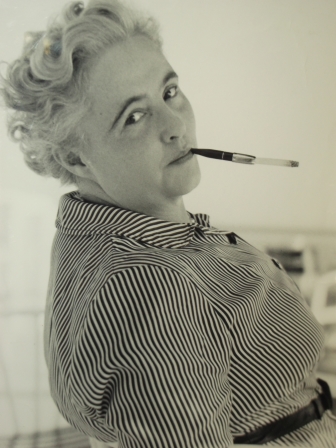
Margery Allingham (above) and (below) her top toff sleuth Albert Campion as played in the 1989 BBC series by Peter Davison and as drawn by Pip Youngman Carter, Margery’s artist husband.
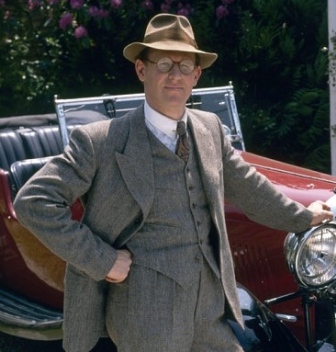 
For the more enlightened, who are already fans of Allingham and Albert Campion, I would point out that Ostara Publishing produce splendid editions of the two Campion novels written by Margery’s widower Youngman Carter (edited by…er…me) and the completion of Youngman Carter’s unfinished 1969 novel, now titled Mr Campion’s Farewell (by…er…me) is available from Severn House as a trade paperback and an eBook in both the UK and the US.
Modesty should, but does not, prevent me from pointing out that Severn House will also be publishing a new Campion ‘continuation’ novel (guess who by), Mr Campion’s Fox at the end of February in the UK and in June in the US.
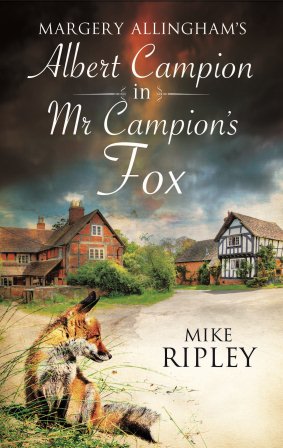
No Longer in the Dark
A month or so ago, quite by chance, I came across an old publicity photograph of English author Peter Cheyney (1896-1951), whose hard-boiled – some would say thuggish – thrillers were huge bestsellers in the years just before, and during, WWII. Taken to promote the 1948 film version of his novel Uneasy Terms, author and executive producer Cheyney is flanked by British heart-throbs Moira Lister and Michael Rennie, who played one of Cheyney’s series heroes, Slim Callaghan. (His other famous hero, Lemmy Caution, became a cult figure in France and of French cinema, when played by Eddie Constantine in numerous film adaptations.)
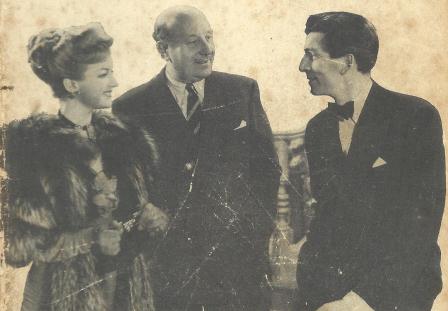
The picture reminded me of the fact that whilst I have the rather lurid covers of several Peter Cheyney novels framed and hanging in one of the bathrooms here at Ripster Hall, I had never ever actually read one and I decided to immediately right that wrong by taking up his 1950 novel Dark Bahama, about which I have written in more detail for the learned journal Crime and Detection Stories (CADS).

Given its thick-eared violence (kicks-to-the-stomach are particularly popular), a cast of supremely self-confident suave secret agents who are irresistible to women, outstanding consumption levels of cigarettes and alcohol, death by man-eating shark and exotic Miami and Caribbean locations, I could not help being reminded of a much better known book published in 1953, less than two years after Cheyney’s death.
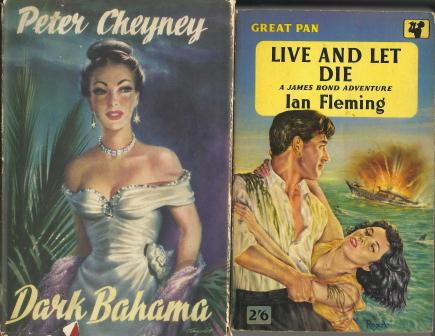
Now I don’t know if Ian Fleming read Peter Cheyney. It is known (through his letters) that Raymond Chandler did and it’s a fair bet Fleming – a newspaperman like Cheyney – did too. Certainly, one can spot many similarities, but where Fleming put his faith in a single, and singular, heroic lead in James Bond, in Dark Bahama Peter Cheyney has no less than four spy/agent/detectives as protagonists, including an arrogant Belgian called Ernest Guelvada, which might suggest that Cheyney had read Agatha Christie…
Suffice it to say James Bond remains an international brand in fiction and film sixty years on, whereas I suspect that Ernest Guelvada is totally forgotten, although for all I know he has cult status in Belgium.
Promising New Year
My reading over Christmas of early 2015 titles has cheered me immensely and I am optimistic that we could be in for a very good year for crime fiction. Admittedly this optimism is based on a relatively small sample so far and as regular readers know to their cost, my record of successful predictions has long been responsible for the smile of the face of bookmaker William Hill.
However, I thoroughly enjoyed Robert Ryan’s third Dr Watson novel, A Study in Murder published by Simon & Schuster later this month, which is an excellent historical thriller in its own right as well as a book Conan Doyle fans will relish, as would, probably, Conan Doyle himself.

In Rob Ryan’s continuation saga, we have reached 1917. Sherlock Holmes is (as everyone knows) retired and keeping bees in darkest Sussex, but across the Channel, the ageing but still sprightly Dr John Watson is doing his bit for King and Country as a medical officer with the British army on the Western Front. Or rather, he was, for his renewed army career as chronicled by Ryan has not gone smoothly and after numerous harum-scarum adventures, A Study in Murder finds him a prisoner of the Germans and, more specifically, a prisoner of spymaster Von Bork who will be familiar to Holmes aficionados from the Doyle story His Last Bow. Not only does the POW Watson find himself a pawn in a game to entrap his old friend Holmes, but is called upon to investigate a particularly grim and murderous conspiracy within the prison camp itself.
Meanwhile, Watson’s allies in England, including the heroic nurse with a soft spot for the good doctor, Mrs Gregson, are conspiring to get him home by whatever means they can despite some in positions of power having their own devious agendas. The wonderful Mrs Gregson is an outstanding character, as is her nemesis, the ruthless female German spy Miss Pillbody, and there are cameo roles for Winston Churchill, Mycroft Holmes and, always present if not always centre stage, Sherlock himself.
There is enough skilled plotting, suspense and fine writing in A Study in Murder to make it an excellent thriller even without its Holmes/Watson parentage – though that adds enormously to the reader’s pleasure. Dedicated Sherlockians will no doubt find many cross-references and sub-texts which I have missed, though I was charmed by a scene where John Watson rages at the careless typesetters and idiotic proof-readers responsible for the ‘continuity errors’ in his published stories from the casebooks of his distinguished detective friend.
|
|
Another treat over the Yuletide period was the new novel, and something of a new departure, by the Anglo-Italian husband-and-wife team who write as Michael Gregorio. After a series of rich historical mysteries set in Napoleonic Europe featuring philosopher detective Hanno Stiffeniis, Michael Jacob and Daniela De Gregorio have come up to date with a vengeance, with a contemporary thriller, Cry Wolf, just published by Severn House.
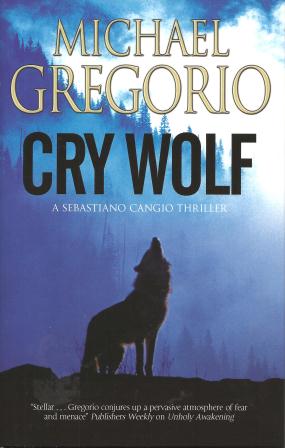 Set in the beautiful and (until now) Mafia-free region of Umbria where the authors live, Cry Wolf is a hard-boiled thriller written at break-neck pace of political corruption and organised, very violent crime. Umbria’s misfortune was to be hit by earthquakes, but fortunately the European Commission was there to supply millions of Euros to aid reconstruction. Unfortunately, the Mafia thinks it deserves the lion’s share of the aid money and begins to corrupt local political and financial institutions to make sure the Commission funds are syphoned off. Set in the beautiful and (until now) Mafia-free region of Umbria where the authors live, Cry Wolf is a hard-boiled thriller written at break-neck pace of political corruption and organised, very violent crime. Umbria’s misfortune was to be hit by earthquakes, but fortunately the European Commission was there to supply millions of Euros to aid reconstruction. Unfortunately, the Mafia thinks it deserves the lion’s share of the aid money and begins to corrupt local political and financial institutions to make sure the Commission funds are syphoned off.
Caught in the middle of this and an ongoing ‘anti-terrorist’ initiative headed by a charismatic commander of the Carabinieri, is young park ranger Sebastiano Cangio, who has already fled his native Calabria after innocently witnessing a Mafia execution. After that experience, it is not surprising that Cangio prefers life in the wild Umbrian hills studying the local population of wolves. But it is not long before gun-carrying wolves walking on two legs move into the territory and prove far more dangerous than the native inhabitants.
Cry Wolf is a fast-moving, tense and exciting slice of contemporary Italian crime fiction and I suspect, and certainly hope, that we will hear more of Sebastiano Cangio – if the wolves, of one sort or another, don’t get him first.
Although not published until April by Tinder Press (an offshoot of Headline), I intend to make an early start on The Snow Kimono by Australian Mark Henshaw as I am intrigued not only by the premise of the novel (a retired French police inspector investigating multiple mysteries in Japan) but by the back story of its seemingly reluctant author.
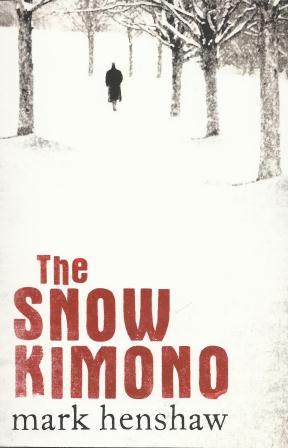
From what I can discover, this is Mark Henshaw’s second solo novel (he has co-written a brace of crime novels) which appears no less than twenty-six years after his acclaimed debut. I am assured it has been worth the wait.
I think it safe to say that one rarely has to wait twenty-six weeks for a new novel from the prolific American hardboiled maestro Max Allan Collins. His latest, out this month from Hard Case Crime, is Quarry’s Choice, continuing the misadventures of a Vietnam vet turned professional hit-man who first appeared in print back in 1976.
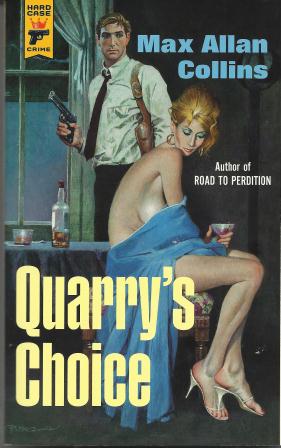 The stylish cover painting by Robert McGinnis shows immediately that this is no cosy country house mystery and the size of the male character’s gun reminds old stagers such as myself of the classic works of Mickey Spillane. Which should not be at all surprising given that Max Allan Collins was a collaborator of Spillane’s in his later life and is the ‘continuation’ author of Spillane’s famous Mike Hammer series. The stylish cover painting by Robert McGinnis shows immediately that this is no cosy country house mystery and the size of the male character’s gun reminds old stagers such as myself of the classic works of Mickey Spillane. Which should not be at all surprising given that Max Allan Collins was a collaborator of Spillane’s in his later life and is the ‘continuation’ author of Spillane’s famous Mike Hammer series.
And coming soon, I am looking forward to tucking in to three titles which will not be released to the general population until March. From New Zealand, the new Paul Thomas novel featuring maverick Maori detective Tito Ihaka, Fallout, is finally brought to the UK by Bitter Lemon Press, having been on my anxiously-awaited list since I learned of its publication down in Middle Earth last year.
From Italy, I anticipate another consummate performance, conjuring up Fascist-era Naples with a slight dash of the supernatural, from Maurizio De Giovanni when Europa publishes his new Commissioner Ricciardi thriller Viper. And from dear old London town (and I use the word ‘old’ deliberately) comes Christopher Fowler’s twelfth ‘Bryant & May’ novel The Burning Man published by Doubleday. To say that the Bryant & May books are deliciously quirky is a bit like saying that Volkswagen are famous for making small family cars, but fans of the series will know what I mean.
Men Only
Being an understanding and generous employer here at Ripster Hall, I have allowed a television set to be installed in the under-butler’s pantry. Recently, however, I was shocked to discover that several of the junior footmen and some of the stable lads have taken to gathering there to watch a channel which boasts that it only shows films “for men”. Concerned for the moral well-being of the staff I immediately investigated and discovered that Channel 48 on something called ‘Freeview’ is actually called Movies4Men, which did not exactly reassure me and so I insisted on taking a look at what it offered.
At first I was bemused by the programming, which seemed to consist of old black-and-white Westerns of which not even I had heard, alternating with crudely acted war films or ‘sword-and-sandal’ epics made in Italy or Spain or sometimes, terrifyingly, both. And then suddenly, there was something clearly English and relatively modern – only a little over 30 years old – and it featured an actor I knew, indeed had worked with: Ian ‘Lovejoy’ McShane.
The film I had spotted turned out to be based on the 1970 crime novel High Tide by one of my all-time favourite authors P.M. Hubbard, who is now quite disgracefully forgotten in his native country.
 Originally made as a four-part serial for television in the Armchair Thriller series and first broadcast in 1980, High Tide bore all the Hubbard trade-marks: a small cast of an unheroic, understated British Everyman hero, an enigmatic mystery woman and a shadowy villain; an isolated, wild location, this time a West Country coastal one; and a brooding atmosphere of suspense generated by unspectacular, ordinary events. Apart from some ropey production values by Southern TV (which lost its franchise in 1981), it was very enjoyable but also rather disturbing as I suddenly realised this film “for men” was based on a book I hadn’t read and I have regarded myself as a true Hubbard aficionado from the time I discovered his books in Panther Crimeband paperbacks in the 1960s, which I still own, and continued to follow Hubbard’s output (being rarely disappointed) until his death in 1980. But somehow I had missed High Tide. Originally made as a four-part serial for television in the Armchair Thriller series and first broadcast in 1980, High Tide bore all the Hubbard trade-marks: a small cast of an unheroic, understated British Everyman hero, an enigmatic mystery woman and a shadowy villain; an isolated, wild location, this time a West Country coastal one; and a brooding atmosphere of suspense generated by unspectacular, ordinary events. Apart from some ropey production values by Southern TV (which lost its franchise in 1981), it was very enjoyable but also rather disturbing as I suddenly realised this film “for men” was based on a book I hadn’t read and I have regarded myself as a true Hubbard aficionado from the time I discovered his books in Panther Crimeband paperbacks in the 1960s, which I still own, and continued to follow Hubbard’s output (being rarely disappointed) until his death in 1980. But somehow I had missed High Tide.
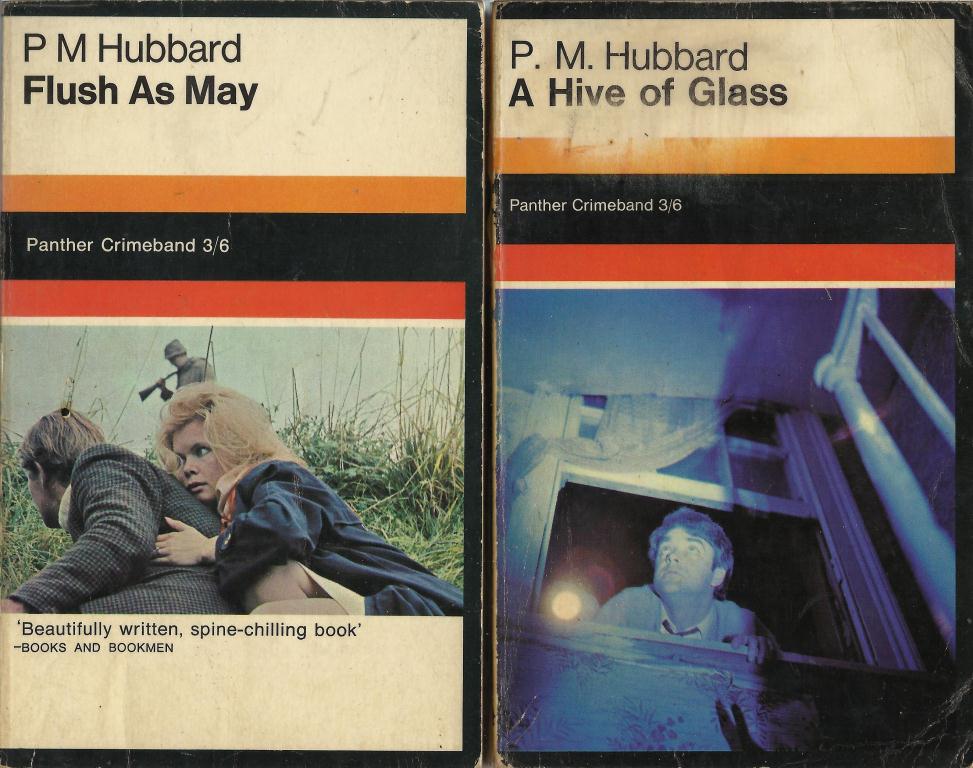

Fortunately, those wonderful people at Wonder Books in America found me a copy with commendable promptitude and for the paltry sum of about five of their Yankee dollars, and I am currently wallowing in its pages to the extent that I have completely forgotten to check out what is showing on Movies4Men. Perhaps I should, for there are occasionally diamonds to be found in the rough there.
For a less tortuous way of discovering the novels of Philip Maitland Hubbard, I highly recommend an article by Tom Jenkins published on the excellent Mystery File website, which dates from 2005 but I think is still accessible at http://www.mysteryfile.com/Hubbard/Worlds.html.
The Talented Mr
I am not exactly sure what drew me to an article on the website of American publisher Brash Books entitled “How to Create a Series Character” but I am always ready to learn from those more talented than I.
In fact the tutorial I had expected was really a brief guide to some of the established characters (and double-acts) in recent American crime fiction with non-American creations, apart from a passing mention of Sherlock Holmes, not getting a look in and surprisingly no mention of Ross Macdonald’s Lew Archer.
I was familiar with the work of all the authors in this feature with one notable exception.
 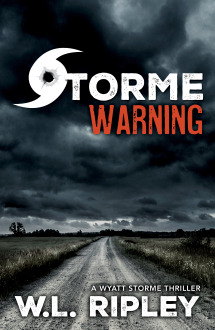
Until now I had been unaware of the novels of W.L. Ripley (the unusual surname must have confused me) who has created two series heroes: Cole Springer and Wyatt Storme, the latter featuring first in thrillers some twenty years ago which are now being reissued by Brash Books, who also publish a new novel, Storme Warning, later this year.
Portrait of the Artists as Thriller Writers
It wouldn’t be a new year without two new titles from Top Notch Thrillers and the new pair of reissued Great British thrillers are both by writers who are also known and respected as painters.
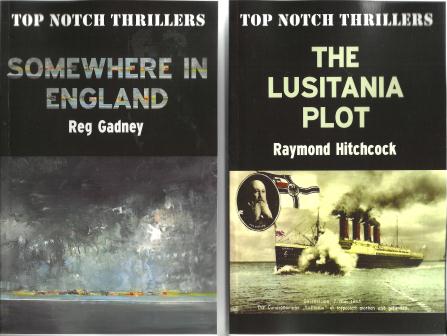
Somewhere in England, originally published in 1971, by Reg Gadney, concerns a young academic researching Nazi propaganda films who gets embroiled in the hunt for a Nazi war criminal who may be hiding somewhere in England. Our reluctant hero has to contend with interference from various intelligence agencies and the even more ruthless attentions of the sinister ODESSA network.
Reg Gadney, whilst writing numerous novels has also written for television, most notably the five-hour drama Kennedy for NBC and his adaptation of Minette Walters’ The Sculptress for the BBC, as well lecturing and writing on art and becoming a respected painter in his own right. The cover of Somewhere in England (which opens on the Suffolk coast) features one of Reg’s oil paintings of the River Alde from 2000. His most recent one-man show, ‘Portraits’, opened in London in May 2014 where his models included Helena Bonham-Carter, Sir David Hare and Bill Nighy.
Raymond Hitchcock (1922-1992) established a career as a cartoonist then painter before becoming a novelist in 1969. After international success with the risqué comedy Percy he turned to other genres including thrillers, most notably The Lusitania Plot, originally published as Attack the Lusitania! in 1979.
Republished to mark the centenary of the infamous sinking of the ocean liner during WW1, The Lusitania Plot is a gripping conspiracy-theory thriller based on a real incident which continues to generate conspiracy theories to this day. At the time, the Lusitania was marked as a political and military target by the warring powers. With stalemate on the Western Front, a U-boat attack on the liner whilst carrying American passengers might be enough to bring the neutral USA into the war. But if the Imperial German Navy could not be tempted into sinking the ship, then perhaps British Naval Intelligence would have to take drastic and outrageous action itself…
Further details of these titles and information on the careers of Reg Gadney and Raymond Hitchcock can be found at www.ostarapublishing.co.uk.
Situations Coming Vacant
The more observant reader will have noticed that this is the 98th edition of this august column. Under the terms of my contract with Shots Magazine – signed at midnight at a crossroads on the Essex marshes – my indentures are completed with my one hundredth column which the more astute will have worked out is scheduled to appear in March 2015.
Consequently this is advance notice of the fact that Shots will soon be advertising for a new contributor for Getting Away With Murder. For both tax and security reasons, the post is officially known as ‘Trade Columnist’ and further details of how to apply will appear next month.
Happy New Scrolling,
The Ripster.
|